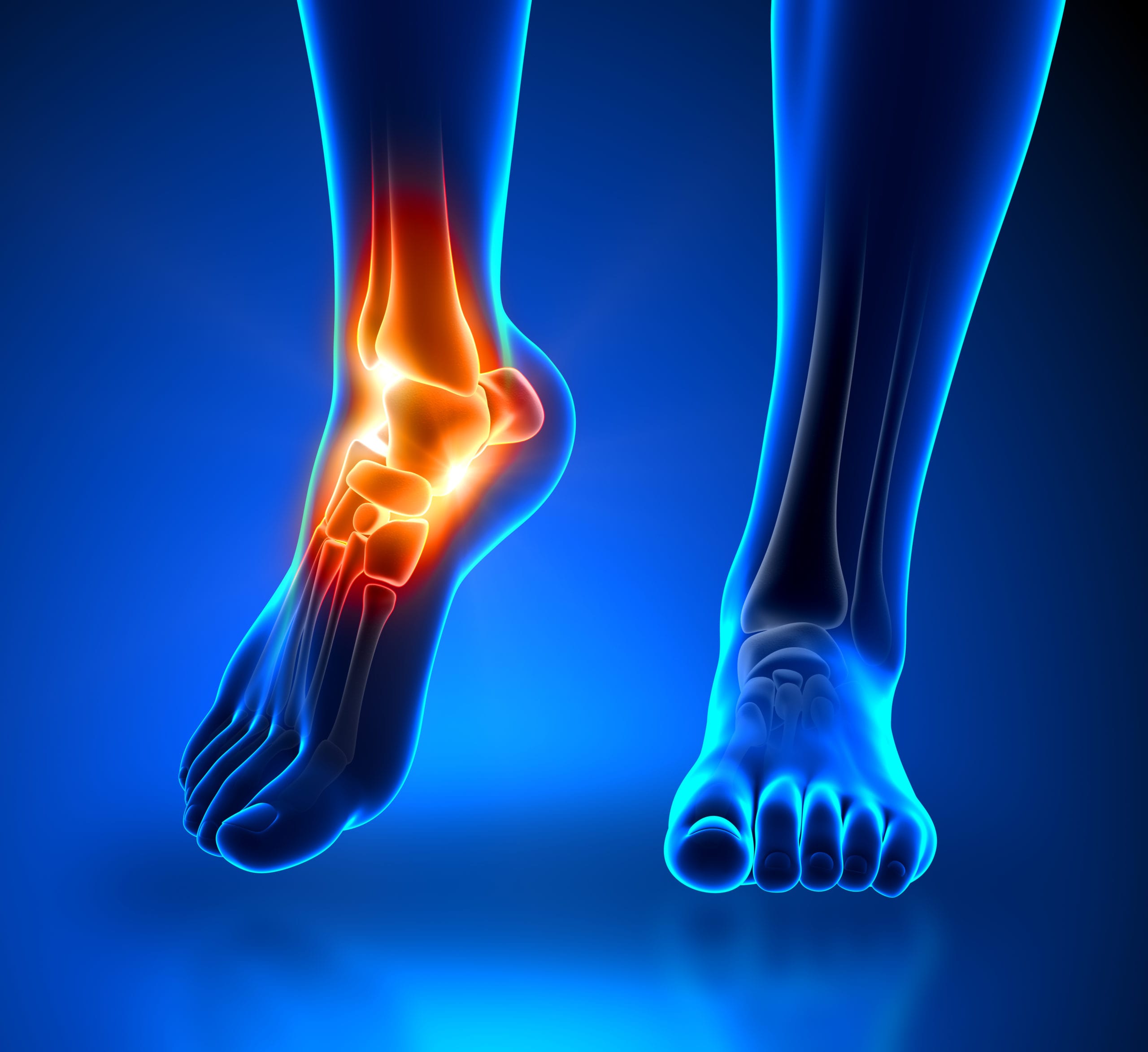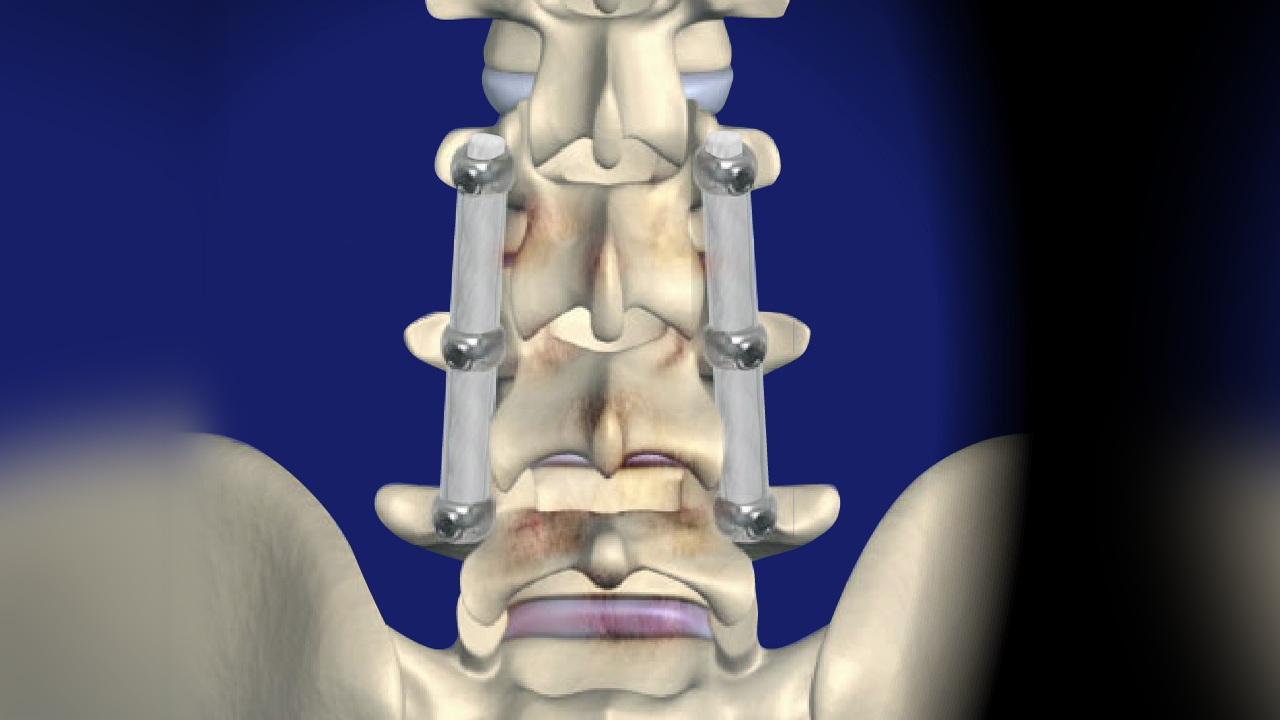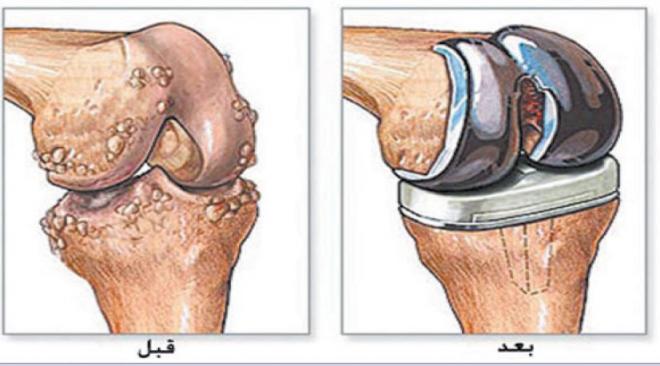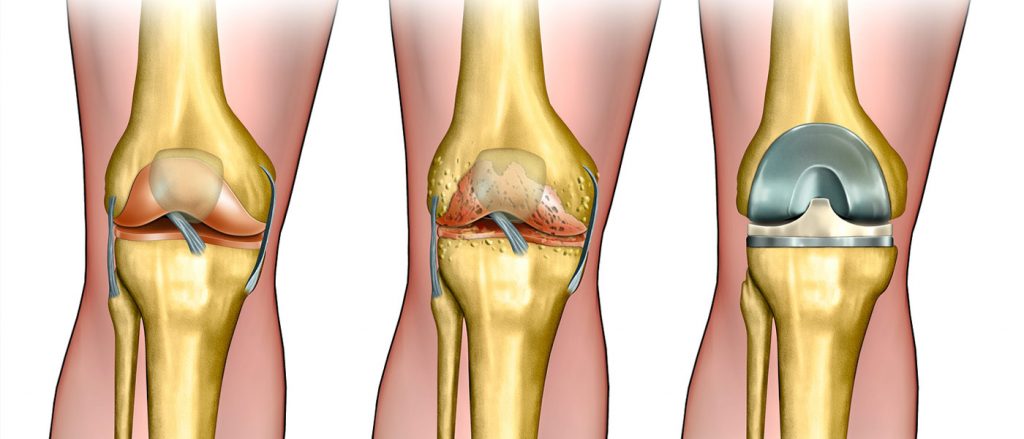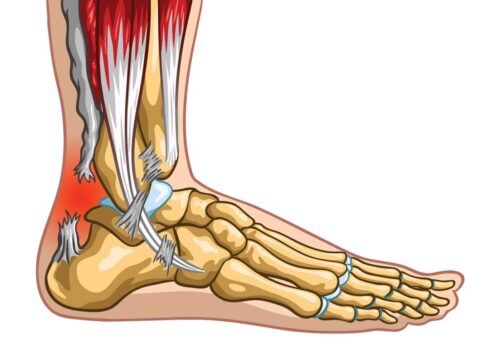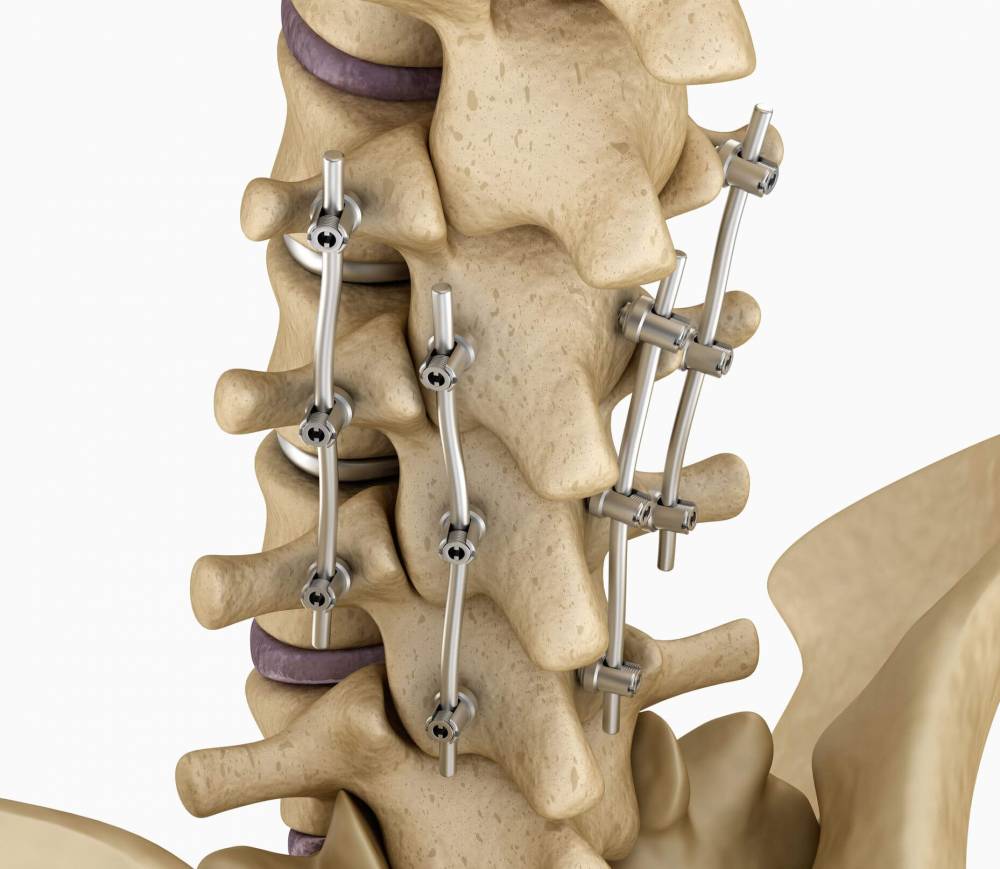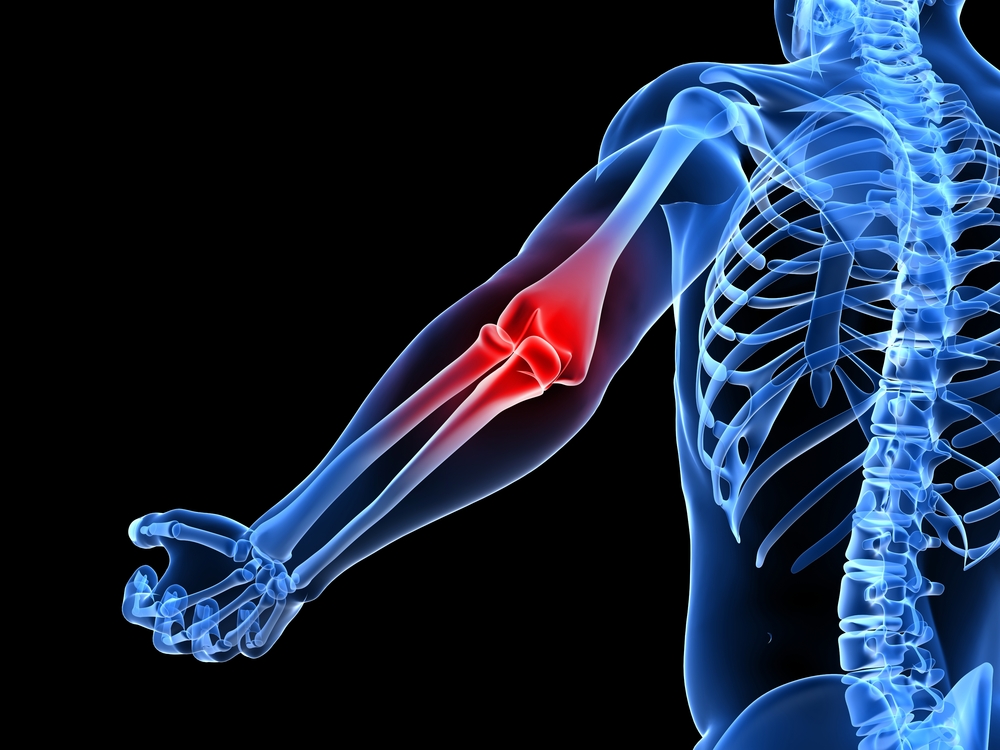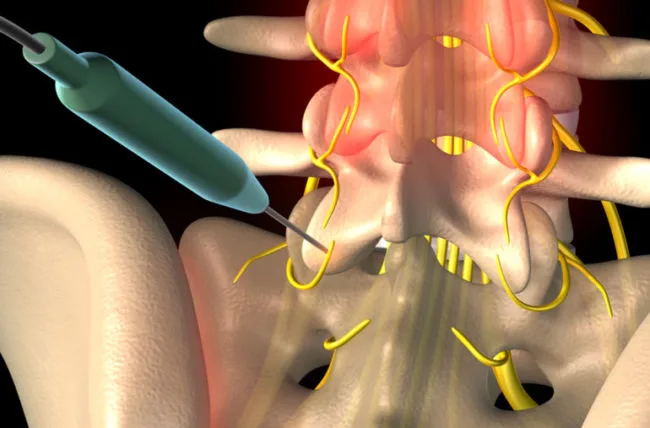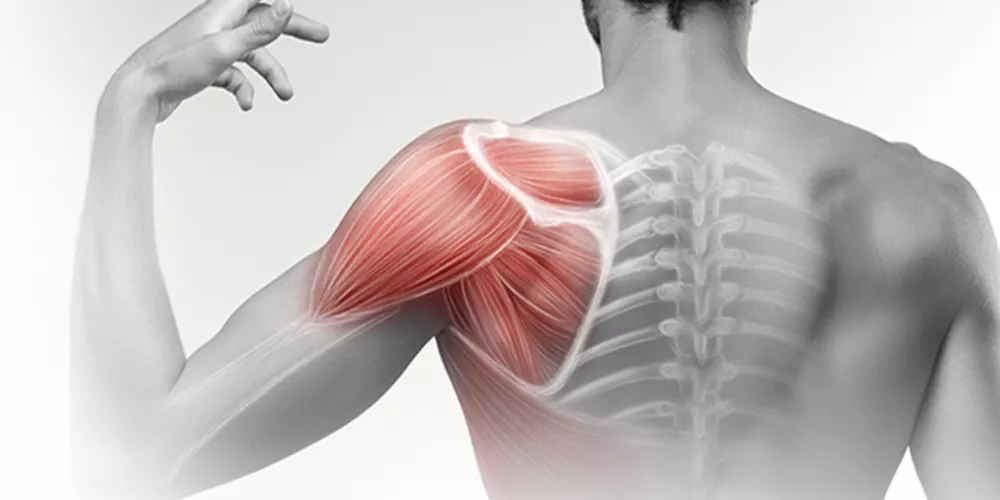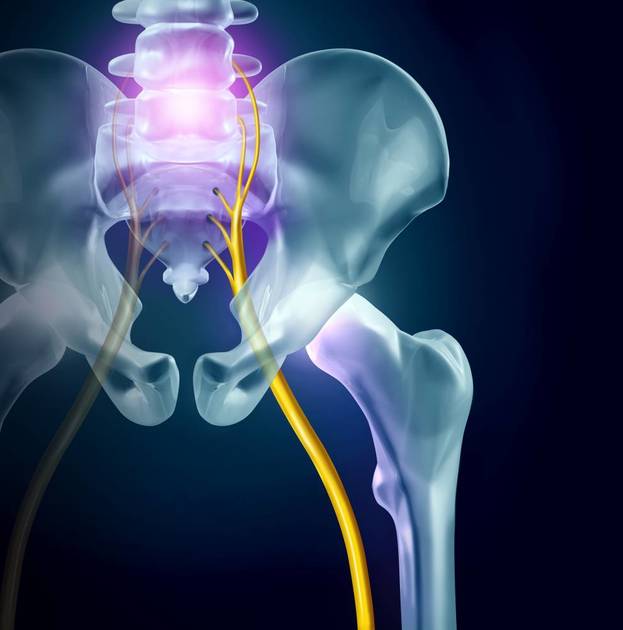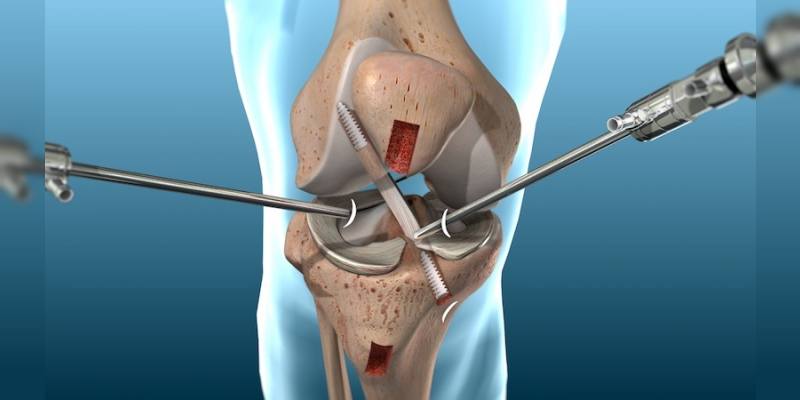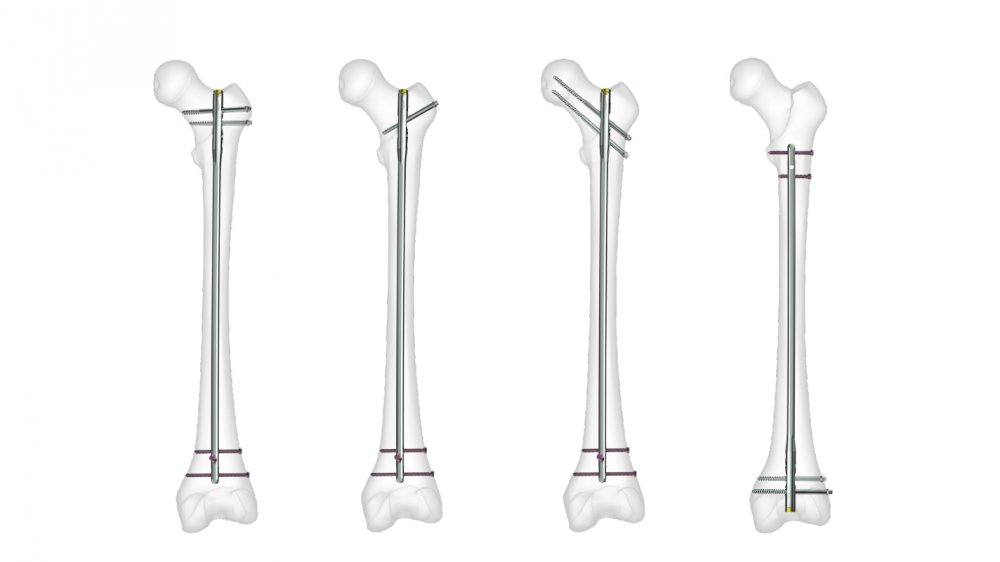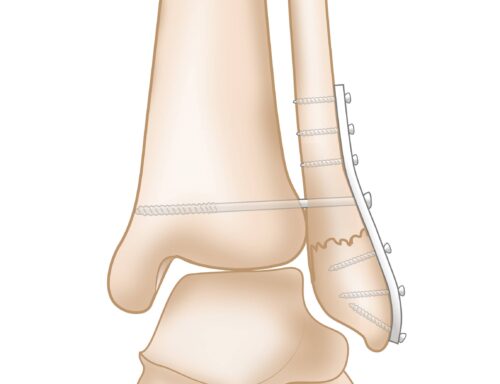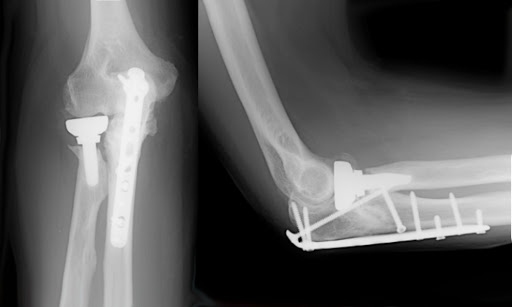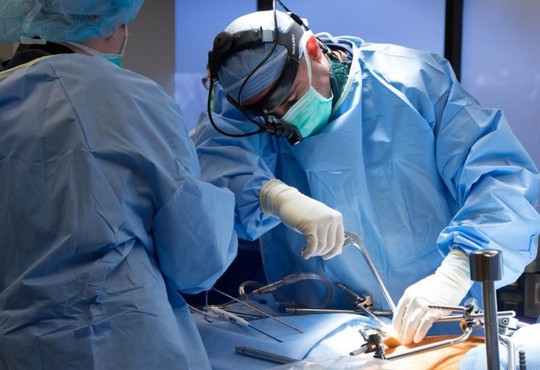The Heel Spur Surgery
The Heel Spur Surgery, is considered one of the important medical procedures for treating heel spur pain. Through our following article, you can learn more about various medical information and details related to this procedure, and get ready to live freely and comfortably with the assistance of Dr. Amr Amal, “the leading expert in orthopedics.” Place your bone health in qualified hands and find the optimal solutions for heel spur problems.

Heel Spur Surgery Heel Spur Surgery
The heel spur surgery on the heel is one of the traditional surgeries that rely on making an open wound to treat the heel spur found in the foot. After the surgery is complete, the patient begins the recovery period, and the feeling of recovery is quicker with adherence to the instructions provided by the attending physician.
What is a Heel Spur?
A heel spur (Heel Spur) is one of the diseases that affects the sole of the foot and causes sharp pain in the heel, affecting the patient’s condition and causing severe pain, especially in the early morning. The pain begins to gradually decrease during the day, but if the person stands for long periods, the feeling of pain may return again.
Heel spur disease is an inflammation that occurs in the plantar fascia, which is a connective tissue connecting the heel to the toes. The plantar fascia generally works to reduce the impact on the foot during movement. However, when it becomes inflamed, it starts to cause pain and difficulty in moving the foot for the patient.
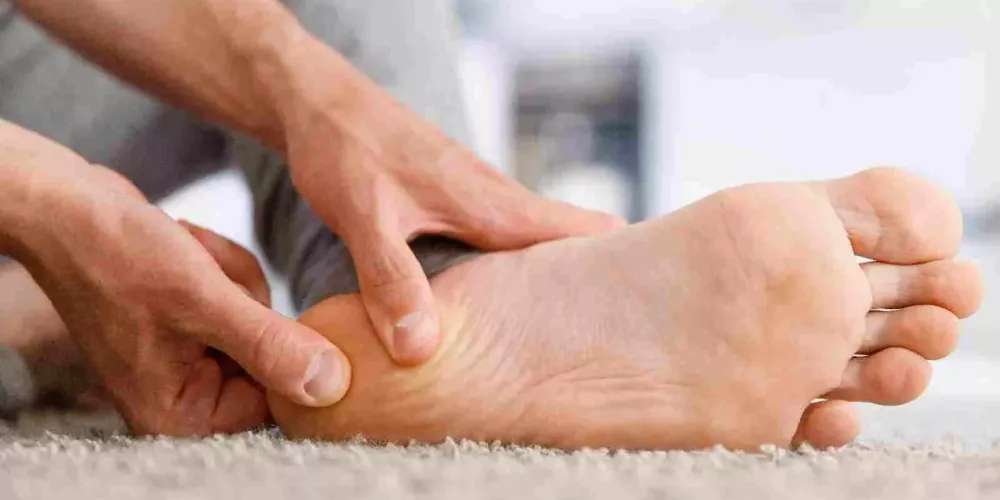
How Do I Know if I Have a Heel Spur?
The symptoms of a heel spur begin to gradually appear on the patient when the plantar fascia becomes inflamed, causing pain in these connective tissues, and thereby causing pain for the patient upon waking up and starting their daily activities. The symptoms of a heel spur appear as follows:
- The pain is usually sharp and bothersome in the plantar area of the foot, and it can be more severe when walking or standing for long periods.
- The plantar heel spur may be accompanied by swelling or puffiness in the affected area.
- Inflammation may occur in the plantar joint, which can increase pain and swelling.
- Those suffering from a plantar heel spur may find it difficult to wear shoes due to the pain and swelling, and may need to choose shoes that provide good foot support.
- The plantar heel spur may lead to a change in the shape of the foot, making it appear abnormal.
If you are experiencing these symptoms or suspect that you have a heel spur in the foot, you should consult an orthopedic specialist or foot surgeon to provide the appropriate evaluation and treatment. Treatment may include pain relief, physical therapy, and in some severe cases, surgical intervention may be necessary to remove the heel spur or correct the bone structure of the foot.
Reasons for Heel Spur
Heel spurs do not occur for a specific reason, but there are some factors that increase the likelihood of developing a heel spur in general, including:
- Presence of inflammation in the plantar fascia.
- Accumulation of calcium deposits at the part connected to the ankle joint.
- Aging; meaning individuals over the age of forty are more susceptible.
- Engaging in strenuous sports activities for the foot, leg tendons, and heel such as ballet or running.
- Sustained weight gain “obesity.”
- Suffering from flat foot condition, which causes pressure on the foot.
- Working in a profession that requires standing for long periods.

Heel Spur Treatment
About 90% of those with heel spurs can be treated without the need for surgery, but rather with medications, conservative treatment, and physical therapy. Heel spur treatment methods may include:
- Using ice packs to improve the patient’s condition and reduce heel swelling.
- Reducing activities that cause pain or require high effort from the patient.
- Engaging in simple exercises that strengthen leg muscles and reduce tendon pain, which can be done without getting out of bed.
- Allocating more time for passive rest, such as sleeping or lying down.
- Using specific types of medications for heel spurs, including anti-inflammatory drugs and pain relievers.
- Utilizing injection therapy, which reduces swelling in the heel and relaxes the tension in the heel tendons, improving heel spur pain.
Heel Spur Resolution
“Get immediate relief and lasting results for heel spur issues with personalized programs designed specifically at Dr. Amr Amal’s clinics.”
Heel spur treatment, also referred to as heel spur resolution, often involves home or conservative treatments that help improve the patient’s condition and reduce pain. In addition to cold water compresses and medications for treating heel spurs, it is essential to choose footwear with high flexibility to absorb shocks and reduce foot pain.

Is Heel Spur need Surgery?
Yes, there is a surgical procedure for treating a heel spur, which aims to improve the patient’s condition and alleviate their pain. However, the treating physician typically starts with non-surgical treatments, whether medicinal or home-based. If the body does not respond to this treatment plan, surgery becomes the most effective solution.
When is Heel Spur Surgery Performed?
Heel spur surgery is generally the last resort for orthopedic doctors treating a heel spur. The pain resulting from the heel spur can be treated by releasing the plantar fascia, which causes heel spur pain. Doctors resort to this type of surgery if the body does not respond to other treatment methods or if the pain negatively impacts the patient’s daily movement.
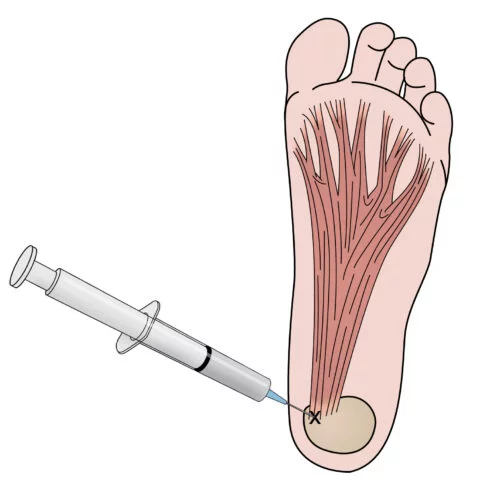
Heel Spur Surgery
The surgical procedure followed in heel spur surgery can be divided into two types: the first is through open surgical intervention, and the other is through endoscopy. The surgeries can be conducted as follows:
Open Heel Spur Surgery: The surgery is performed under general anesthesia for the patient through making an incision in the skin. This allows for the release of the plantar fascia, consequently alleviating pain in the heel and foot.
Endoscopic Heel Spur Surgery: Endoscopy can be utilized in the surgical treatment of the heel bone. The surgery is performed under the influence of local anesthesia only, and the surgeon needs no more than two to three holes in the affected part of the foot to insert the tools and endoscope and perform the surgery.
In both operations, the patient can leave the hospital on the same day after a complete examination and recovery from anesthesia. The medical team prescribes the patient procedures and instructions for post-operative care and what they should do after the surgery.
Heel Spur Surgery Post-Operative Recovery
Recovery after surgical procedures takes some time, but during the recuperation period, the patient should be careful to follow certain procedures that help in faster recovery. These are a set of tips after the heel bone removal surgery, which include:
- Ensuring that the rest period is sufficient.
- The patient begins to use special shoes for a few weeks after the surgery.
- The patient follows up with their doctor until the stitches are removed in the case of an open wound.
- The doctor may prescribe some medications that must be adhered to until recovery.
- Efforts should be made to improve the patient’s condition through a complete sports regime after the operation.
- Taking fiber pills after the operation to prevent constipation.
- Eating soft foods and avoiding hard ones after the operation.
- Cleaning around the wound with a towel and soap instead of bathing.
- Keeping the wound site clean and dry and changing the dressing at the doctor’s office as instructed.
- Applying cold compresses to the wound site for no less than 10 minutes and no more than 20 minutes, repeating this every two hours if possible.
For a comprehensive solution to treating heel spurs, read the following article.

Is the Heel Spur Surgery Dangerous?
“Discover comfort and immediate pain relief with the high expertise and precision in diagnosing and treating heel spurs at Dr. Amr Amal’s clinics.”
In rare cases, a patient might experience complications after heel spur surgery, so yes, there is a potential risk associated with the procedure. However, doctors strive to minimize the chances of these complications through proper preparation before the surgery and medical follow-up after the procedure.
The risks of heel spur surgery may include:
- Infection in the affected area leading to poor wound healing.
- Damage to the nerves near the injury site.
- Persistence of the original pain prior to surgery.
- Development of a benign tumor due to issues with fibers and nerves (in rare cases).
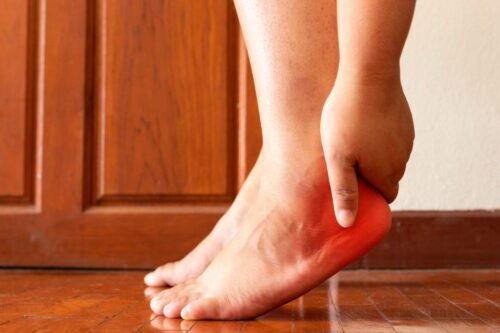
Complications of Heel Spurs
If heel spurs are not treated in a timely manner, you expose yourself to numerous severe complications, some of the most prominent of which include:
- Pain may be the primary symptom of a heel spur in the foot, due to excessive tension on the tendons and surrounding tissues of the joint.
- A heel spur in the foot can lead to a noticeable deformity in the shape of the foot, which can affect the foot’s appearance and cause structural deformities.
- Swelling can occur in the areas around the joint affected by the heel spur, often accompanied by pain.
- It may be difficult to walk normally due to the deformity in the foot’s position, requiring special shoes or corrective devices.
- Severe heel spurs can lead to a change in weight distribution on the foot, causing additional pain and increased pressure on joints and tissues.
- Regular shoes may not be suitable for people with heel spurs in the foot, necessitating footwear that supports and corrects the foot’s position.
- Skin infections may occur in areas where the skin is excessively strained due to rubbing against ill-fitting shoes.
- Individuals with heel spurs in the foot may feel uncomfortable and dissatisfied with the appearance of their feet, potentially affecting their mental health. For more information on whether heel spurs are dangerous, read the following article.
Cost of Plantar Fasciitis Surgery
The cost of plantar fasciitis surgery is a subject of interest to many people suffering from plantar fasciitis. It can be said that the cost of plantar fasciitis surgery varies based on several factors, such as the costs of pre-surgery diagnostics and post-surgery medical equipment costs.
In addition to other factors including the patient’s condition, body structure, age, and any other diseases they may be suffering from, the prices are moderate and include the cost of post-surgery physical therapy. Therefore, individuals should contact their treating physician to find out the prices specific to their health condition.

Best Doctor for Treating Plantar Fasciitis
If you are suffering from plantar fasciitis pain in the heel, the best option for your treatment is Dr. Amr Amal. He specializes in orthopedics and surgical operations, and is fully knowledgeable about plantar fasciitis pain and the best ways to eliminate it. He is also a faculty member at Ain Shams University and a consultant in orthopedic and joint surgery at the same university. Dr. Amr Amal treats roughness and joint pain using various therapeutic methods such as arthroscopy and other types of plantar fasciitis treatment, making him the ideal choice for treating this type of pain.
Dr. Amr Amal can be found at Dar Al Fouad Medical Tower, making him available to provide necessary treatment at any time you want. Therefore, it can be said that Dr. Amr Amal is the optimal choice for treating plantar fasciitis. He will provide you with the best treatment to eliminate this pain and will guide you through the procedures that need to be done to perform plantar fasciitis surgery, as well as regularly follow up with you before and after the surgery.
Prohibited Foods for Plantar Fasciitis Patients
The type of food and diet can help in treating plantar fasciitis condition, and this is through drinking plenty of water while maintaining the consumption of vegetables and fruits. As for the prohibited foods for those suffering from plantar fasciitis, they include:
- Avoiding salty foods.
- Avoiding fruits that have a high sugar content, such as figs, mangoes, and apricots.
- Avoiding legumes such as beans and fava beans.
- Avoiding foods high in fat, such as lamb.
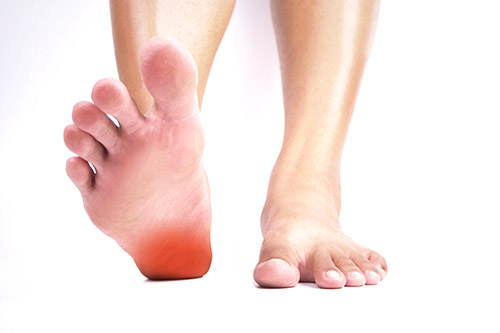
Does Vitamin D Deficiency Cause Plantar Fasciitis?
Many individuals may wonder whether a deficiency in Vitamin D can cause plantar fasciitis. Indeed, answering this question can significantly solve many potential problems that could severely affect your foot. For more information on treating plantar fasciitis, please read the following article.
If you are asking whether plantar fasciitis can occur due to a Vitamin D deficiency, the answer is yes. Vitamin D deficiency can lead to plantar fasciitis. Vitamin D is crucial for bone health as it aids in the absorption of calcium and phosphorus from the intestines and their deposition in the bones, maintaining their strength and hardness. Therefore, a deficiency in Vitamin D can lead to weakened bones and an increased risk of developing plantar fasciitis.
Does Plantar Fasciitis Affect the Back?
Many individuals may wonder whether plantar fasciitis affects the back. It is important to clarify that plantar fasciitis is a condition that affects the foot, occurring as a result of inflammation in the tissues connecting the toes to the heel.
In fact, there is no scientific evidence indicating that plantar fasciitis affects the back. However, back pain can be caused by various factors, such as spinal stenosis, muscle pain, improper walking, among other issues that may arise due to plantar fasciitis.

My Experience with Plantar Fasciitis
A follower shares her personal experience with plantar fasciitis, detailing her journey as follows:
Eman from Alexandria says, “I went through tough days and unbearable pain. This resulted in significant inflammation and severe pain in my foot, one of the most challenging experiences one could endure. This led to numerous issues with walking, wearing shoes, and more. Until a friend recommended visiting Dr. Amr Amal, assuring that he could find a solution to all the pain I was experiencing. And indeed, upon visiting his clinic and getting examined, I was diagnosed with plantar fasciitis. Following the post-surgical physical therapy procedures, my life has significantly improved. The pain no longer torments me as it used to, and I can wear my beautiful shoes again without pain or suffering. Therefore, I advise everyone to visit Dr. Amr Amal’s clinic to address their orthopedic issues if they have any. For more information on plantar fasciitis exercises, read the following article.”
My Experience with Plantar Fasciitis Laser Fragmentation of Plantar Fasciitis
Plantar fasciitis is a common condition affecting the foot, resulting from inflammation in the tissues connecting the toes to the heel. Laser treatment for plantar fasciitis is an option, although there is no scientific evidence confirming the effectiveness of this treatment. Pain from plantar fasciitis can also be alleviated through a series of exercises that help strengthen the muscles around the foot, improve flexibility, enhance balance, and significantly reduce pressure on the foot.
Laser fragmentation of plantar fasciitis is a surgical procedure that uses laser technology to treat plantar fasciitis issues in the foot, which may result from structural deformities or chronic inflammation. There are several cases that may require this procedure, including:
- Laser can be used to reduce the size of a spur or plantar tuberosity in cases of plantar fasciitis deformities causing pain or movement difficulties.
- Laser can help reduce swelling and inflammation in the plantar fasciitis area, contributing to pain relief and improved function.
- In some cases, laser can be used to remove fibromas or benign tumors growing on the plantar fascia.
- In severe cases of plantar fasciitis deformities, laser can be used as part of a surgical or corrective procedure to reshape the foot’s structure.
Laser fragmentation of plantar fasciitis is considered a less invasive surgical option compared to traditional surgery, potentially reducing recovery time and post-surgical pain. However, this procedure should be performed under the supervision of a qualified and specialized surgeon. Patients should discuss the benefits, risks, and their personal needs with the surgeon.
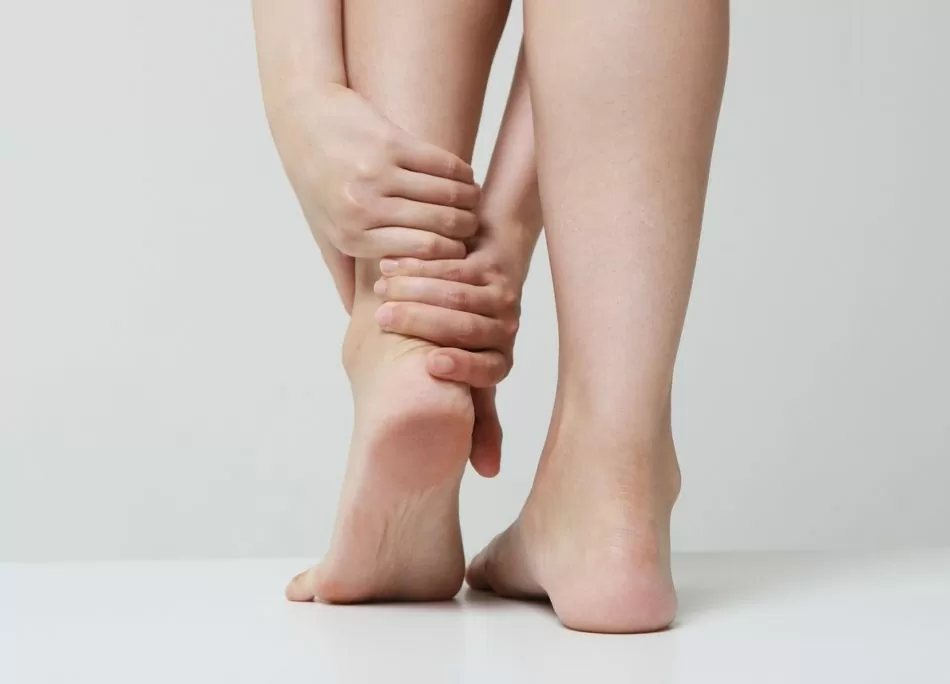
Prevention of Heel Spurs
Preventing heel spurs is crucial as it can provide the highest possible level of care and attention for yourself, keeping you away from many painful surgical procedures that could occur in the future, causing you a lot of ongoing pain and fatigue. Therefore, it is essential to deal with this matter with utmost importance. The most prominent ways of prevention that can be followed to prevent heel spurs include the following:
Maintaining Ideal Weight: It is important to keep the weight normal and to lose weight if needed.
Wearing Appropriate Shoes: You should choose shoes that are wide at the toe area and padded to prevent friction.
Eating a Healthy Diet: Ensure consuming foods rich in calcium and vitamin D to maintain bone health.
Engaging in Exercise: Engage in sports activities that strengthen bone health, such as walking or climbing.


